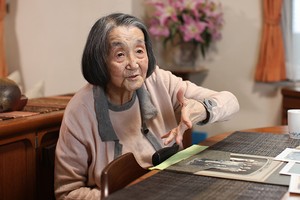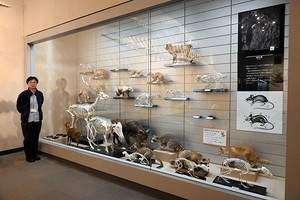By JUN HASEGAWA/ Staff Writer
April 14, 2025 at 17:58 JST
NISEKO, Hokkaido—The famed powder skiing destination is attempting to fix a costly dent in its image after claims such as "a bowl of ramen costs 2,000 yen here" and "one onigiri costs 1,000 yen" have snowballed.
"Niseko is too expensive" is a sentiment propagated by more than a few news articles and TV programs that zeroed in on soaring commodity prices against the backdrop of a weak yen, all accompanied by an increase in the number of foreign tourists.
However, Niseko town officials said that residents are perplexed as such reports are “far removed from the reality of life in the area.”
In addition to Niseko town, the area mainly encompasses the northern towns of Kutchan and Rankoshi, which all see hordes of international skiers pass through each winter.
"These examples of high prices are taking on a life of their own," said a representative of the Niseko Town Hall Commerce and Tourism Division.
While it is true that certain restaurants and accommodations' food, drinks and lodging are expensive, town officials claim this is limited to certain districts and times of year.
Officials went on to say that the cost of living in most areas is the same year-round as anywhere else in Japan's countryside.
Even so, financial losses have already dogged some business owners as this reputation takes hold, with accommodations in Niseko reporting instances of their regular guests shunning them despite not marking up their room rates.
Some participants in a town-sponsored informational session to promote relocation expressed concerns that started with, "I long to live in Niseko, but the cost of living is," before trailing off.
Given this, the town decided to hit back with a cost breakdown of the nation's go-to budget dish—curry rice.
Private credit research company Teikoku Databank Ltd.'s "curry rice price" method is used to measure differences in living expenses; it involves combining the total cost of ingredients, rice and roux with that of water and utilities to calculate the price of one bowl of curry rice.
The national average was 396 yen ($2.80) as of January.
The town used the same index in its own estimate and found that one bowl in Niseko can be made for 54 yen less at 342 yen.
Town officials believe this may be due to the area's thriving agricultural industry that grows most of the ingredients locally.
Furthermore, the town estimated the cost of preparing an “example of a balanced breakfast” as defined by the agriculture ministry.
The national average was 310 yen. Town officials found that it costs 294 yen in Niseko.
Officials also said the town's hourly wage for January was 15 percent higher than the prefectural average after referencing data from private companies and Hello Work, a public employment security office.
Hourly pay in Niseko, where the busy winter season comes with serious labor shortages, also exceeded the national average by 5-8 percent.
They hope this sends a message that "the lifestyle of Niseko residents is no different from those in rural areas nationwide."
Officials are also encouraging people "not be misled by information in the media and to visit the town."




















A peek through the music industry’s curtain at the producers who harnessed social media to help their idols go global.
A series based on diplomatic documents declassified by Japan’s Foreign Ministry
Here is a collection of first-hand accounts by “hibakusha” atomic bomb survivors.
Cooking experts, chefs and others involved in the field of food introduce their special recipes intertwined with their paths in life.
A series about Japanese-Americans and their memories of World War II